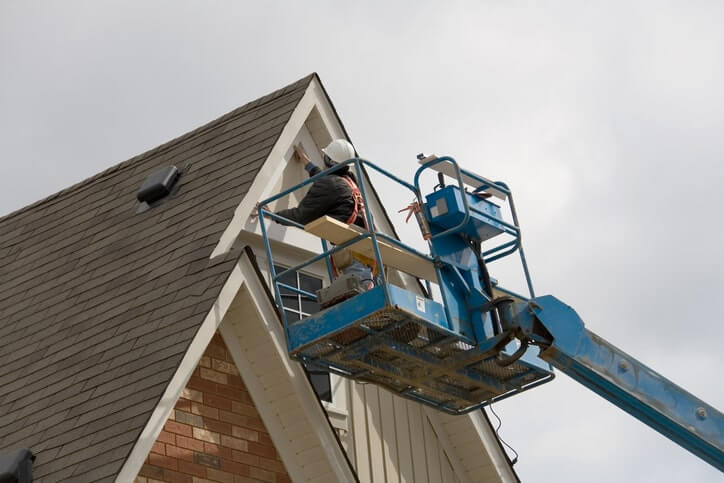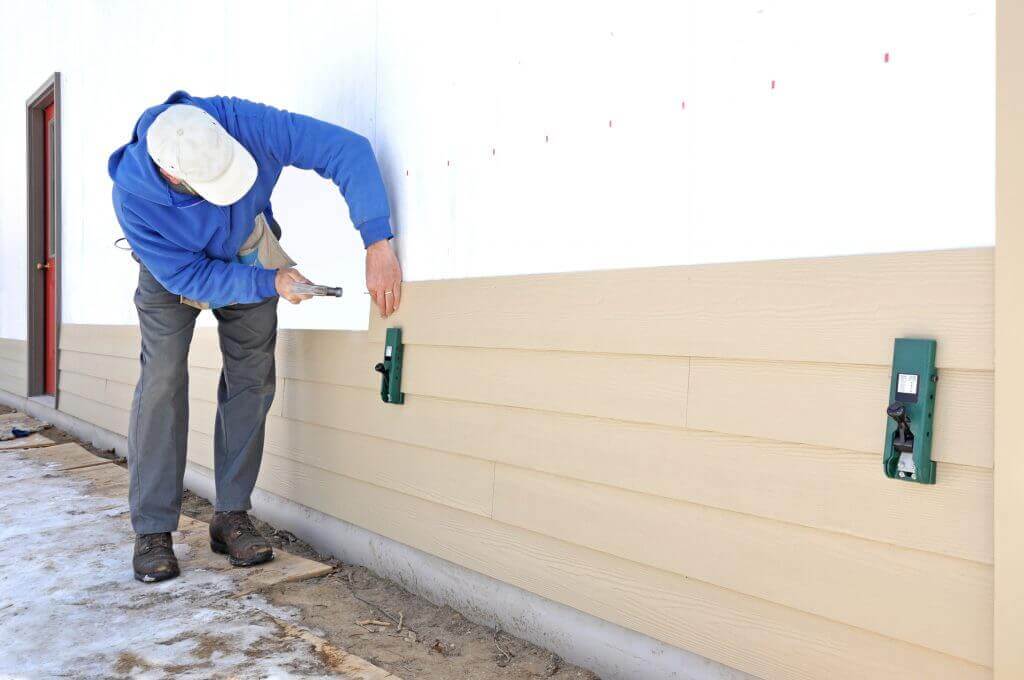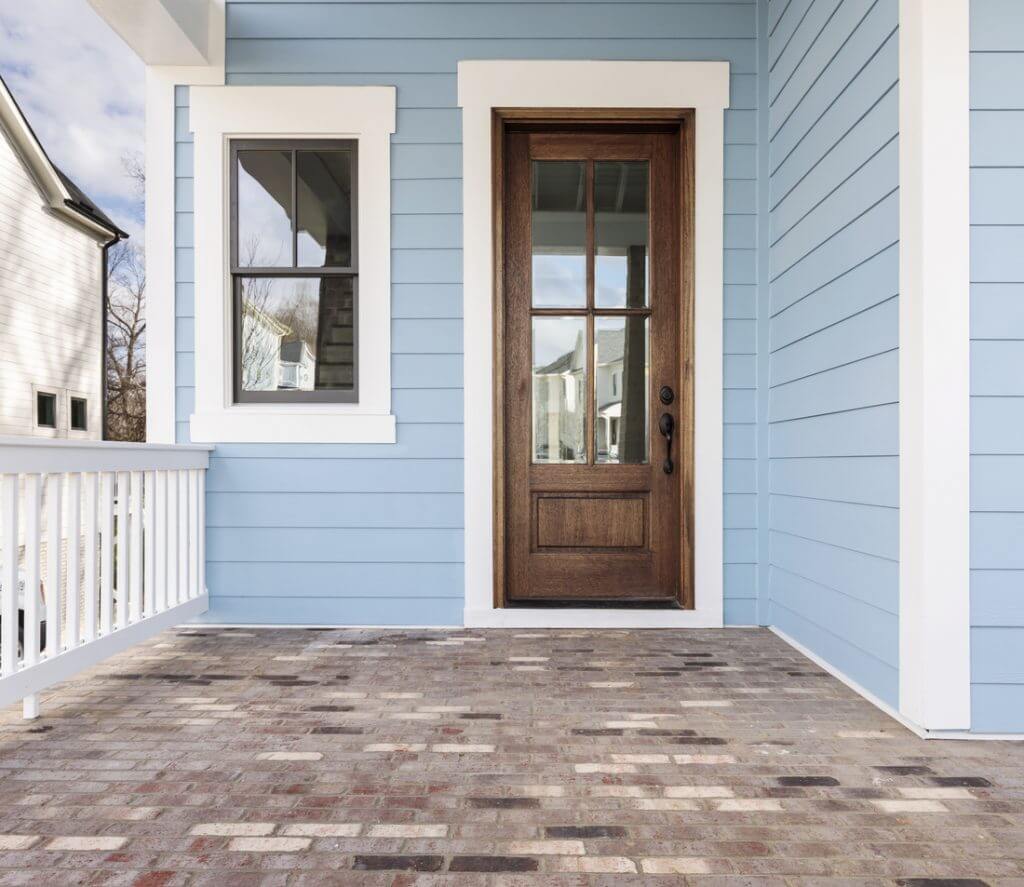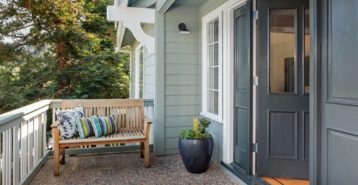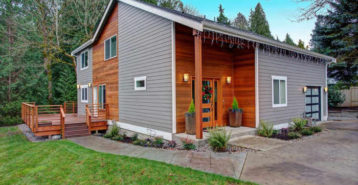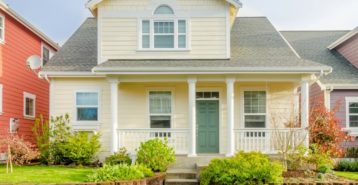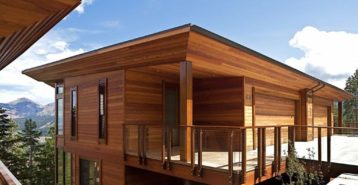Vinyl siding is a low-cost, plastic exterior siding that about 26% of American homes feature. Increased options in size, texture, and color in recent years have only made vinyl siding more popular and a favorite amongst homeowners seeking a durable solution, with a high ROI.
How Much Does Vinyl Siding Cost?
Vinyl is one of the most affordable siding material options, with siding projects ranging anywhere from a couple of thousand dollars to as high as $32,500 — though the national average is just under $20,000 for a 2,500 square foot home. Its low cost is partly due to its lightweight quality and ability to be installed directly over your existing surface, even brick or stucco.
Factors That Influence Vinyl Siding Installation Costs
Vinyl siding costs vary depending on factors such as the siding’s thickness, quality, and style. The project cost will also depend on:
- Cost per square foot for vinyl siding
- Your home’s design and size
- Cost to remove old siding
- Type of vinyl siding you choose
- Local labor and installation costs in your area
Below, you can review the biggest factors that will influence your total siding project cost.
Cost per Square Foot
Cost per square foot for vinyl siding and the size of your home may be the biggest factor influencing the total project cost. Here is an overview of average project costs depending on home size:
| Average Vinyl Siding Cost per Square Foot | $4.15 to $15.25 |
|---|---|
| Total Average Cost for 1,000 sq. ft. Home | $2,400 to $12,800 |
| Total Average Cost for 2,500 sq. ft. Home | $6,000 to $32,500 |
Several factors can impact the cost per square foot, including the quality of materials and which type of vinyl siding you choose. Be sure to get an accurate quote from a professional siding contractor based on your home’s specific needs.
How Home Layouts Impact Cost
Your home’s design will have an impact on the overall cost of a siding replacement or installation. Intricate designs, such as homes with eaves, gables, and corners, will make installation and labor costs rise, as they are more complex than a simple home design. If your home is two stories, it will result in higher materials and higher labor fees. This is because the installation may require tool rentals such as mechanical lifts for contractors to install vinyl siding on high up exterior walls of your home.
Cost to Remove Old Siding
Should your home require siding removal, homeowners can expect to pay between $1 to $2 per square foot in labor to remove on average. For a 2,500 square foot home, that’s between $2,500 and $5,000. The total cost will depend on the size of your home and complexity of removing materials. If you are replacing your home’s siding rather than installing new siding on a new construction home, you will definitely incur siding removal fees. Your siding installer will also need to inspect the underlying material for any rot or damage, and determine if repairs are needed.
Homeowners should clean gutters, remove outdoor furniture, and cover bushes and other landscaping features. Additionally, a dumpster (and perhaps a dumpster permit) will likely be necessary.
Contractors will likely work on one side of your house at a time and should thoroughly clean the area after each workday. The process should take about a week to complete, and the entire removal and replacement process can take up to two weeks.
Cost by Type of Vinyl Siding
There are eight different styles of vinyl siding (discussed below) which can impact cost. More dramatic or high-end styles, such as scallops or shingle-style, can be more costly than basic horizontal or vertical styles.
Local Labor Costs
In addition to the cost of materials, homeowners can expect labor costs between $2 to $5 per square foot, but about $3.70 on average. Labor costs depend heavily on your specific geographic location and competitive pricing in your area.
These costs will also depend on many of the factors listed above, such as the siding’s thickness, quality, and style. Different styles and types of siding are more challenging to install than others, resulting in a price increase.
For example, labor in hot real estate markets like Houston, TX and San Jose, CA can cost upwards of $5,500, compared to more rural markets which might only pay half or less than that rate.
Another factor to consider is the time of year you choose to install new siding. Siding contractors’ busy months are often during the summer or spring. Winter and fall months are usually slower, and siding contractors may have better installation pricing during slower months to generate more business.
Overhead costs for contractors to acquire your new vinyl siding material may also be influenced by your geographical location as there can be increased shipping fees from siding manufacturers depending on your distance from their warehouse and associated costs to deliver.
What Is the ROI of Vinyl Siding Replacement?
A vinyl siding replacement can yield an 94.7% rate of return on investment when you sell your home, according to the 2023 Cost vs. Value Report. If you are looking to sell your home soon, vinyl siding is a great way to increase curb appeal and potential buyer’s interest.
Even if you are planning to stay in your home for years, your vinyl siding will increase the attractiveness of your home and make it more energy efficient. Plus, most vinyl siding comes with a lifetime warranty, so you’ll reap the benefits of your investment throughout the life of your home.
How Is Vinyl Siding Installed?
Siding installation is a delicate process that requires a thorough assessment of the integrity of your home’s walls, and conducting any necessary repairs for water damage or rot. As part of the installation process, contractors will remove the old siding from your home and inspect for such damage before adding new siding.
Contractors will also check the areas around the siding for proper insulation. Hiring a trusted professional for these steps will help better ensure your siding’s appearance and stability. Once all necessary repairs have been made, your contractor will begin the process of installing your vinyl siding.
Benefits of Vinyl Siding
New vinyl siding looks great. It comes in a variety of styles, textures, and colors, and can mimic the look of more expensive materials like cedar shakes and stone siding. Vinyl continues to be the most popular siding material for homeowners due to several factors, including:
- Low cost: It is more affordable than most siding types and reduces a homeowner’s ROI time.
- Color variety: Vinyl siding comes in a wide range of colors, allowing for maximum customization. The color also is not prone to fading over time.
- Mimics high-end siding: You can create the same warmth and richness as wood or stone at a fraction of the price. Plus, unlike lumber, vinyl is resistant to water damage and pest infestation, and can withstand high winds.
- Insulation: Insulated vinyl siding reflects radiant heat, reducing thermal conductivity and keeping your home cool and your energy bills low. It also reduces noise pollution from outside your home.
- Easy installation: This helps keep installation costs at a minimum.
- Low maintenance: Maintenance work is a minimum, and it is easy to keep clean.
- Weather resistance: If you live in an area prone to severe storms, there are brands of vinyl siding that can stand up to 240 mph winds. Depending on the type of vinyl siding, you may even be eligible for a reduction in your insurance premiums.
However, vinyl siding can crack in prolonged, extreme heat and can hide water damage — potentially masking mold or mildew on your home. Be sure to regularly clean vinyl siding to keep it fresh and damage-free, as well as extend its lifespan.
Costs Based on Vinyl Siding Types
There are three basic styles of vinyl siding to choose from — horizontal lap, vertical, and shingles and shakes. Each type has variations in design and style giving you 8 different style options (pictured below) when installing new vinyl home siding. Each of these options vary in price, affecting your bottom line for new siding installation.
1. Horizontal Lap Vinyl Siding
Horizontal or clapboard siding runs across the house horizontally. You may also hear it referred to as “traditional lap.” Horizontal vinyl siding comes is several popular styles such as Dutch Lap, Beaded, and Flat. It also comes in many different textures that create the look of real wood. Horizontal lap vinyl siding styles include:
- Traditional Horizontal
- Beaded
- Dutch Lap
- Log Style
This type of siding ranges from $2 to $7 per square foot, making it the most affordable style.
2. Vertical Vinyl Siding
Vertical siding, also known as “board and batten” runs vertically up and down your home. It consists of wide boards with a smaller board or “batten” used to seal the crack where the two wide boards meet, making your siding weather tight and helping to keep the harsh winter winds out.
This type of siding ranges from $4 to $12 per square foot, making it a bit more expensive.
3. Shingle & Shakes Vinyl Siding
Cedar wood shake siding is very beautiful, giving your home a warm rustic charm. Cedar is a rich, hardy wood with beautiful colors and hues. With that being said, real wood cedar shake siding is very expensive and requires more maintenance. Vinyl shake siding can give you the same stunning look without the high cost or high maintenance. Shingle and shake style options include:
- Cedar Shake Imitation
- Wood Shingle Imitation
- Scallop Style Wood Imitation
Note that many homeowners combine several different types and styles of siding to create a unique architectural look. For instance, some homeowners will use vinyl cedar shake and scallops as trim to separate different sections of the home. If you need help deciding on which type to put on your home, talk to one of our vinyl siding installation contractors near you to get an expert opinion.
This type of siding ranges from $4 to $9 per square foot, placing it in the middle cost wise between the three types of vinyl siding.
Maintenance and Cleaning Needs for Vinyl Siding
At a minimum, plan to deep clean your vinyl siding at least once per year. You can knock it out with other yearly home maintenance tasks, such as cleaning your gutters and changing your A/C filters.
Most homeowners should be able to spot clean using specialty-made cleaners available at their local hardware store. For more intensive cleaning, it might be tempting to pressure wash vinyl siding. However, pressure washing can remove paint and even tear through the siding or damage the layers behind it if applied to a targeted area.
For this reason, we recommend enlisting the help of a professional to protect your investment.
While cleaning, you should also inspect for rotting, warping, cracking, holes, or excess moisture build-up. These can all be signs that your siding is in need of repair or replacement.
Finding a Professional Vinyl Siding Installer
Because a siding installation is labor-intensive, you will likely require a licensed contractor to perform the job. It is to your advantage to select a reputable contractor who is highly experienced with siding installation. A licensed siding contractor will also have the necessary insurance to cover the installation, materials, and labor. Our siding contractor checklist can help you ensure you are hiring the right professional for the job.
Looking for a place to start comparing contractors and project estimates? Modernize is your go-to resource. Our network of siding contractors are highly experienced and qualified to get the job done.
Compare top-rated siding pros in your area.
Read real homeowner reviews, explore qualifications, and view promotions. Modernize makes it easy to browse professionals and find one that will be perfect for your project.


